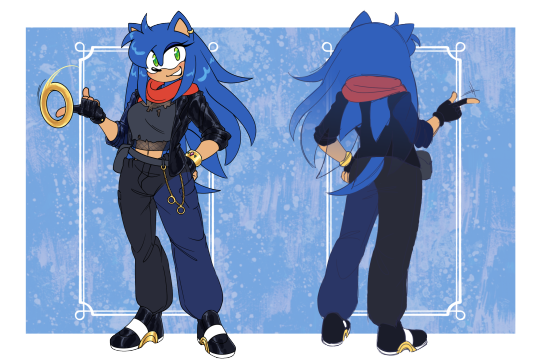#tiger’s musings
Text
Practice saying, “There’s nothing WRONG with the original ending or story, it’s just not the one I needed.”
Then going forth and quietly making the transformative or original work that is.
326 notes
·
View notes
Text
I just had a thought that woke me in a cold sweat from a nap...
Since EEnE and KND technically exist in the same world, what if the adults from EEnE are always gone because they're busy terrorizing the KND?
This is not at all a serious headcanon, but it's funny to think about.
#torra rambles#the nonsensical musings of a tiger on 3 hours of sleep#ed edd n eddy#codename kids next door#truthfully it was uh... what's the villain's name who has the retainer#I'm too lazy to look him up rn#but he reminds me of Jimmy lmao#The Boss could totally be Eddy's dad#those were the ones that made me laugh the hardest tbh#Wink and Fibb strike me as Jonny's dads#I wanna say prof xxxl would be edd's dad but he's too whacky#the granny with the food kinda reminds me of rolf#An eene x knd crossover would have been hella funny tbh#they made a 4th wall break about the adults from the eds side
43 notes
·
View notes
Text

he’s friend shaped 🐻
#the way my procrastination is going I’m gonna make my way through the whole lineup at this point#do we think Benny is an otter or perhaps some kind of mink#I’m trying not to think too hard about why i have such a desire to draw the toronto maple leafs as woodland creatues.#i don't question the muse tho#so. have some Joe Woll :)#wolly#L#art#my art#also special thanks to @tiger-balm bc your tags on that one bear post inspired me
39 notes
·
View notes
Text

The boy and his tiger. 🐅
#the boy#tiger#tigers#mans best friend#illustration#digital illustration#manga#generative art#aestheitcs#art#anime#anime fanart#black art#beautiful#artists on tumblr#melanin#melaninmagic#muse#spirit animal
74 notes
·
View notes
Text
Everything hitting the fan in both my fave webcomics today I am eating well.
#tiger tiger#the glass scientists#mae muses#webcomics#these comics are like the only two of three that I consistently follow#and the big ‘uh-oh’ reveal moment happening in both of them on the same day?#yes please
25 notes
·
View notes
Text
In stories with partners who are heroes and/or have mecha suits we trust 😌
#プロメア#promare#サムライフラメンコ#samurai flamenco#TIGER & BUNNY#Brave Bang Bravern!#勇気爆発バーンブレイバーン#they know what they're doing fr#my post#myst's musings
17 notes
·
View notes
Note
do u have any Tiger Lily quotes? shes my fav character!
Tiger lily: Peter...you're an idiot.
Peter: What ?
Tiger lily: You cant get Hook to throw you into an enemy it's not going to work out.
Peter: How do you know?
Tiger lily: Hook hates you.
Peter: But it would be so cool-
Tiger lily: Shhhh, I know it would Pete but it's not gonna happen.
26 notes
·
View notes
Text

"Hear them, they're calling your name!"
After ten thousand years, here's Olympia the Hedgehog in all her modern glory! Drawn once again by the spectacular Mint (@rgtag)! The girlypop is real and I'm so sorry she is!
ONLY REBLOG IF YOU'RE A MUTUAL, PLEASE.
#my kingdom ;; ooc#play the hero ;; olympia#Fight Like a Tiger ;; Olympia HCs/About#Soar Like an Eagle ;; Olympia Aes/Vis/Musings#save each and everyone ;; SAVES#LOOK AT HER. LOOK. AT THE FUCKIN' PRINCESS. THE FUCKIN' GIRLYPOP. THE MOST LOVELIEST HEDGEHOG YOU'VE EVER SEEN
30 notes
·
View notes
Text
The Devouring Gaze in The First Omen
The horror of surveillance and surveilling in Arkasha Stevenson’s The First Omen (2024).

Cap via ScreenAnarchy.
I was saying the other night after we came out of the cinema that for the past few years, it really feels like I can trust horror films more than virtually any other film — horror films generally have a specific, presumed audience of older teens and adults who know what they’re in for, and subsequently, they don’t always fall in the same trap of overproduction that other films fall prey to.
When I watch a lot of new horror releases, even though they are as much part of unnecessary franchising as a lot of other films, I tend to be able to trust that they’ll be a bit more original, a bit more flexible, a bit more intelligent in their use of lighting —
And but for a few flaws in the aforementioned franchise connection, The First Omen is a gorgeous exploration of all the mindbending and nastiness the horror genre has to offer.
This is hardly the first horror film to bring a young novitiate to Rome as the core of its initial premise — this sort of foreign transplant of an American to a much more religious, much more “classical” feeling European nation, particularly the centre of the Catholic Church outside of the Vatican, is a staple of the genre.
Why is it that a young, new nun makes such a perfect protagonist in a horror film like this?
She’s youthful, naive — sheltered. Her desire to be cloistered in part comes from the fact that she has been raised by and with the church for the whole of her life, and now an adult, she wishes to continue in that vein forever more.
She represents the power of the Catholic church to passersby, veiled and wearing vestments, even as a novice without being fully pledged and committed — she covers her hair to show her commitment to God and to Christ, she covers her body, and yet while she wears this uniform, while she serves as a symbol of the Church and its power, she is not yet privy to its secrets, or the information known to pledged members of the order, the sisters more superior to her, let alone the priests and other clergy.
Margaret (Nell Tiger Free) has one foot in this new world, and at the same time, it is a world that she’s always been a part of — part of the reason that Luz (Maria Caballero) invites her out to the disco is ostensibly to give her a taste of the real world, having only existed within the church’s bounds and its confines. Margaret has been in this world her whole life and has known that some information was kept from her. She knows that she’s sheltered, and yet the extent to which she’s truly ignorant not only of the wider world but also of the church evades her.
What does it mean for a nun to take the veil?
The veil on a nun’s hair is a reminder of her submission to Jesus Christ — a reminder to herself, a uniform she wears to be ever-reminded of the commitment she has made, and at the same time, it is a sign of her consecration, an indication to anyone about her that she has been set aside in service to Christ and the church, that she is not available as a wife or a sexual partner: she is a bride of Christ.
To take vows as a nun for some women is a way to avoid the weight of men’s gazes on her body, on her hair, on any part of her but her face — she is made to some extent invisible, a small part of a larger body, blending in with the black and white camouflage of the other women around her. Her identity is no longer her own but sublimated by the larger whole, and the only outward indication should be one thing — her submission to Christ — or the other — the authority she wields on behalf of the church.
So much of the First Omen is about Margaret’s fear of being seen, of being observed, of being looked at. In one scene after another, we are aware of her on her own, the only subject of the viewers’ gaze on the screen, locked alone in a room, or in a bed positioned in the room’s very centre; she is paranoid at times, looking over and over her shoulder for an observer she doesn’t catch or find, and occasionally finding an unexpected one, another young woman, another novitiate; when she is strapped down to be victimised by the bestial jackal kept in the church’s cellars, when she is strapped down once again to give birth, she is observed by dozens of veiled spectators.
These veils, I would point out, are quite different to those ordinarily worn by the nuns and worn by men and women alike — resembling black funeral veils, the veils over their heads in the cellar, when Margaret is impregnated and then when she is giving birth more resemble, in my mind, those veils worn by those feasting on ortolan, where the head covering is worn to shield them from the watchful and judgemental eyes of God, for taking part in so disgraceful an act. They wish to gaze upon their act of sacrilege, in their belief to be necessary to draw people back into the church’s fold, but not to be gazed upon by God, whose gaze is meant to be omnipresent and inescapable.
Margaret does not want to be gazed upon by these foreign parties, and she fears this constant watch she is certain of and frightened of — a gaze which, in retrospect, is clear has always been on her, a continuous surveillance that has plagued her throughout her life, as a successful progeny of Satan.
And yet, like her manipulators veiling themselves whilst wishing to observe, she does want to gaze at herself.
Margaret and Luz go out in sexy dresses designed to make them feel attractive in themselves, to make themselves look beautiful and desirable to others, but they still wear wigs to cover their hair, carrying on some form of their consecration even whilst seemingly going against their vows — and Margaret does not just feel gazes on her, but gazes on those around her. Gazes on Luz, on other women, on men.
Within the convent, we’re frequently aware of Margaret’s gaze as she looks at the other sisters, watches these older and more committed nuns laughing and smoking cigarettes, listens to them cracking jokes as they peel potatoes and chop vegetables, watches a nun bouncing on a trampoline — these are versions of these women that would never be permitted to be seen outside of the convent. Margaret and the children cared for by the nuns are privy to these moments, but not passers-by or random people in the street, those who would see these nuns primarily in moments of gravity and piety, where they would be representing the same gravity of the church itself.
We see Margaret’s horror as she watches Sister Anjelica’s brutal triple-barrelled suicide; we see her frequently stopping to stare at Anjelica and, at the same time, rush to cover Carlita’s eyes and turn her gaze away. In the scene where the pregnant mother is giving birth, Margaret frequently moves between one window and the other whenever her gaze is interrupted, desperate to keep watching.
There is power in a gaze.
Almost every horror film about the Catholic church, particularly ones that involve either young nuns or young children (or, in this case, both), are often in various ways metaphors for child abuse, sexual or otherwise. There is a lot of textual abuse of children within the course of this film, with implications of beatings and flagellation, but most of all in the ways that the girls (Margaret and then Carlita) are forcibly held down by the sisters, isolated, kept apart and lonely.
They live in fear of the power that the sisters around them have over them, and to some extent, fear themselves, feel shame and guilt for the ways in which they act “crazy” when these psychotic symptoms — their hallucinations, their constant flinches, their imagined noises, their paranoia, their sudden and unexpected outbursts — are either rooted in the demonic impact of their birth circumstances or might be brought on by the trauma already inflicted on them.
This abuse of Margaret, of Carlita, of others around them, each abuse is one power or other taking advantage of their more vulnerable position, represented first by gazes upon them and then by acts against their autonomy, beginning with shame, isolation, then acts of violence or restraint, and then graduating to the ritual rape of Margaret by the jackal-like demon, and her unwilling C-section.
Margaret, the whole of her life, has been watched and gazed upon by the church and by its agents — by the nuns who cared for and abused her, by Cardinal Lawrence (Bill Nighy), by these secret watchers intent on using her for her later powers, her potential ability to give birth to the Antichrist.
She fears this gaze, frequently turns away from it, and at the same time, she craves to wield such a gaze herself, to have the knowledge behind it that those around her do. The gaze is representative of a larger issue — the number of gazes upon her at any one time represents the amount of powers over her, the number of those who have designs on her she is not aware of or able to control, the number of invisible hands that might be leading her in one direction or moulding her into one shape over another.
Every eye on her is yet another power she cannot resist, and is powerless to escape — every eye on her is hungry, a devouring gaze that seeks to consume aspects of her, not only the submission she has desire to offer to God, but her personality, her body, its autonomy.
It is no surprise, then, that in the aftermath of the purifying fire and smoke, which hides both her and Carlita from view — from the eyes of those in the church or the eyes of God, who is to say? — she, Carlita, and her new daughter flee to a house in the snowy mountains, isolated together, in the hopes that no one will see or look upon any of them… nonetheless, they are tracked and surveilled and never truly safe from the church’s devouring gaze.
15 notes
·
View notes
Text
It's past three in the morning. It is far too quiet.
At times like this I listen to one of my favorite songs from my childhood.
https://tomsmith.bandcamp.com/track/starlight-and-saxophone-3
29 notes
·
View notes
Note
I’m throwing Byakuya at everyone today. What are some of your muses reactions to Byakuya Kuchiki hugging your muse? You can provide context if you’d like!
((No context, only icons LOL))



















#-.V answers#bleachbrainrotbro#muse: the penitent#muse: blue jaguar#muse: shady shopkeep#muse: fallen god#muse: wind reaper#muse: red tiger#muse: silver fox#muse: the horns#muse: plum blossoms#muse: sickly captain#muse: k of z#muse: blue archer#muse: ash cat#muse: madness#muse: one-eyed bug#-.V queue#((have fun deciphering their expressions))#((and matching tag to muse))
9 notes
·
View notes
Text
…sometimes I just. Think about. How literal siblings get stuck with rumors they’re dating, and m-f friendships often don’t get a chance to truly start or develop because of the strain those assumptions and pressure causes…
…while literal same-gender and aspec-affirming couples get slapped with “like siblings” this and “just really good friends” that.
And then how this gets even more reductive with infighting like “m-f friendships can only occur when one of them is homosexual,” or aspecs picking at eachother over rep until it’s a very specific type of aroace on the aroace spectrum of the aspec spectrums (and nobody’s actually happy), and of course fanon ships pitted against gen-no-ships…
…and how everyone just ends up feeling stressed out and invalidated. Because anything—and I do mean anything—that doesn’t fit neatly inside of the heteronormative narrative of “men and women can’t be friends, men and women must be romantically involved, people of the same gender and/or aspec/any other queer identity(ies) must never date.”
And how it makes the queers and cichets alike absolutely miserable.
#tiger’s musings#…that post about The Gay Birds and conservatives losing their fucking minds#and how many times I’ve had people Just Assume or Consistantly Forget my brother and I are dating…not helped by we look Nothing alike#and just. the utter BULLSHIT I have gone through to guard friendships and the chance to even be friends at all#and often wondering why I’m even doing this…besides the Good Men are often timid and This Problem Will Exist Everywhere#so…either I fight. or I remain isolated.#…but I’m so tired of fighting.#and. nevermind when emotions aren’t so Clearcut. it’s not even worth mentioning when THIS. Friendship AT ALL.#just can’t be allowed to exist. gets scrutinized to death when it finally DOES like a dandelion growing through pavement#but without that resiliency. especially when I get tired of being the one to fight for it#or if the other party ever is…I’m so so weary of them all being silent about it#just. let friendships and queer relationships EXIST already#and let them be ‘complicated’ too
7 notes
·
View notes
Text

learning all there is to know about the entirety of pizza bear lore at 2am with my partner who also doesn't know pizza bear lore
#im not putting this in its actul tag because id draw even more vitriol than ive already seen this week lmao#anyways pizza bear game lore is very funny to us in an infuriating way#no shade if you enjoy it tho it's fun to play with lore i get that#i do really enjoy the robot from the books that is also maybe a tree and a tiger at the same time and was programmed in C#none of this is really a spoiler for anything because it's completely incoherent imo#im positive this is what i sound like with LoZ when im talking to someone who doesnt know LoZ#shea muses aloud
20 notes
·
View notes
Text

She dwells where the tigers roam, her heart echoing their silent psalm, in the garden, their love-etched realm. Every glance they share is a tender poem, telling of a love that blossoms, never to whelm.
#illustration#manga#aestheitcs#digital illustration#anime fanart#fantasy#tigers#art#artwork#her#roses#garden#in the garden#florist#muse#blackart#black women#love#gardencore#scenery
50 notes
·
View notes
Text

Joe Keery, the Tiger Whisperer. 💜🪻

Here is the reference picture that inspired this whole art piece. 😂✍🏽
#art#fanart#illustration#artist#draw#drawing#digital art#procreate#joe keery fanart#joe keery#tigers#tiger plush#muse
18 notes
·
View notes
Text

GENERAL STARTER CALL
Reply with muse(s) of your choice ( + your own if you are a multi / sideblog ) for a starter! Starters may range from one-liners to single para! No choice in muse will result in no starter!
#STARTER CALL.#( me having muse here?? insane )#( i was thinking abt tiger and the pussycats again -___- )
11 notes
·
View notes